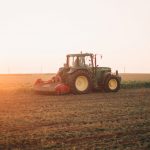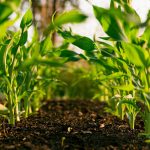
Written by Wandile Sihlobo, Stellenbosch University
South Africa’s agriculture remains an important sector of the economy and holds great potential to reduce poverty. It’s also central to the political economy of the country, as evident in the governing African National Congress’s (ANC) recent policy documents.
The ANC acknowledges that agriculture
holds the potential to uplift many poor South Africans out of poverty through increased food production, vibrant economic activity, and job creation.
This is not a misplaced view. There is compelling evidence that, on average, growth in agriculture is more poverty-reducing than an equivalent amount of growth outside agriculture. This brings home the need to invest in and expand agricultural production, particularly for the benefit of poor rural communities.
This is a view that many have held since the publication of South Africa’s National Development Plan in 2012. The plan argued for the expansion of agricultural production and agro-processing and held up the prospect of nearly a million jobs that could be created.
But year after year, challenges have distracted the country from its agricultural expansion goals.
The year 2023 will be no different. There are six key themes that are likely to underpin the sector, particularly in the first half of this year. These are:
- the impact of energy shortages and associated costs to businesses and consumers, after the severest power outages the country has ever seen
- the expansion of exports
- land reform
- the fallout from collapsing local administrations
- lack of progress on key regulations
- the financing of the sector.
Unless these challenges are addressed, the country’s agricultural sector won’t achieve the growth and job creation prospects it’s capable of.
The impact of power cuts
The country can expect intensified discussion about the impact of energy shortages on agriculture, food, fibre and beverages production.
South Africa’s persistent power cuts are a significant challenge across the economy. At the end of 2022, the South African Reserve Bank highlighted the risks that persistent power cuts represent to the growth prospects of the country’s economy in 2023.
The agricultural sector and food producers have not always been as vocal as, for example, the mining industry, about the impact on their businesses. This is likely to change this year. Power outages have started to disrupt the production of even essential food items This includes potato chips processing, milling and poultry meat processing.
At primary production, farmers using irrigation systems face production difficulties in the current environment.
And there are disruptions across a range of food value chains. Importantly, this also brings extra costs to food companies and farmers, some of which could be transferred to the consumer over time. Consumer food price inflation is already elevated, estimated to have averaged around 9% in 2022 (from 6,5% in 2021), driven mainly by global agricultural commodity challenges.
Export expansion
Expect a major focus on the need for expansion of agricultural export markets.
South Africa’s agricultural sector is export-oriented, exporting roughly half its products by value. Organised agriculture groups are pushing to expand exports.
This is not a new discussion, but it is likely to gain momentum in 2023 as the growth in domestic production necessitates that South Africa reaches new markets. The priority countries should be China, South Korea, Japan, the USA, Vietnam, Taiwan, India, Saudi Arabia, Mexico, the Philippines and Bangladesh. All have sizeable populations and large imports of agricultural products, specifically fruits, wine, beef and grains.
Land reform
Land reform will be back at the top of the agricultural agenda as the drive for inclusion of black farmers in the sector is highlighted in the Agriculture and Agro-processing Master Plan.
But the discussion is likely to focus on redistribution (rather than land restitution and tenure). The focus could be on the launch of the Agricultural Development and Land Reform Agency. For much of 2021 and 2022, the agency was mentioned on various occasions by South African president Cyril Ramaphosa and the minister of agriculture, Thoko Didiza.
Working with the private sector and redistributing some state-owned land, the agency is expected to accelerate land redistribution.
Deteriorating municipalities
The threat of deteriorating municipal service delivery, corruption in public offices and the failures in the network industries such as roads, rail, water, electricity and ports have occupied agribusiness leaders for some time.
These inefficiencies have:
- increased the cost of doing business
- taken investment away from productive agribusiness activities to maintaining roads and other infrastructure
- constrained expansion, and
- made conditions even more challenging for new entrants.
This year, the country’s organised agriculture groupings are likely be more vocal about these challenges as they continue to constrain the agricultural sector expansion, and make conditions even more challenging for new entrants.
Slow progress in fixing regulations
There are likely to be signs of the growing unease about the slow progress in agricultural regulations.
The country’s agricultural sector faces regulatory constraints, such as the dysfunctional State Veterinary Service. This dysfunction negatively affects the production of key vaccines. There is also a need to modernise the Fertilizers, Farm Feeds, Seeds and Remedies Act 36 of 1947. This is key in enabling the importation and registration of key agro-chemicals that are essential for boosting productivity of the agricultural sector.
For an extended period, South Africa embraced science and led the continent in agricultural productivity, benefiting from the adoption of critical agrochemicals, seeds and livestock remedies.
But there’s been a drift away from this positive path. The country now lags behind its competitors due to delays and large backlogs in the office of the Registrar of Agricultural remedy. The result has been that crucial productivity-enhancing inputs haven’t been released to the agricultural industry.
The failures in national vaccine production also remain an issue.
The pressure will intensify to resolve all of these issues, especially as they are part of the legislative points the Agriculture and Agro-processing Master Plan should address. The plan seeks to address key hindrances to growth at a commodity level. Notably, the master plan is a social compact approach. It has already been given the support of major agricultural private sector role-players.
Finance
The need for agricultural finance, particularly developmental finance for new farmers, hasn’t been given enough attention.
At the end of 2022, the focus was on the blended finance instrument by the Department of Agriculture, Land Reform and Rural Development and the Land Bank. The instrument will contribute positively to the sector’s growth and to serving the needs of some new farmers.
In 2023, there will be a drive for the Department of Agriculture, Land Reform and Rural Development to broaden the blended finance instrument to accommodate more financial institutions, and increase its scale to reach more farmers.![]()
Wandile Sihlobo, Senior Fellow, Department of Agricultural Economics, Stellenbosch University
Photo by Steyn Viljoen on Pexels.com
This article is republished from The Conversation under a Creative Commons license. Read the original article.







